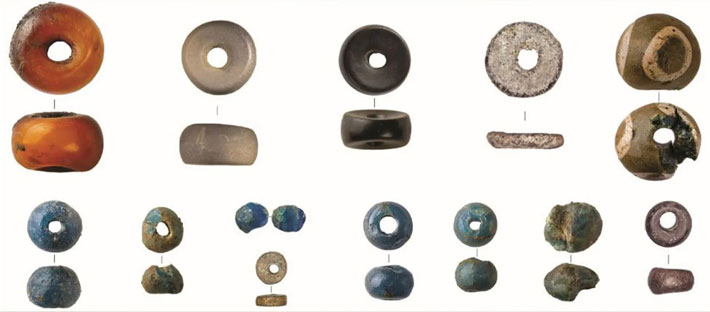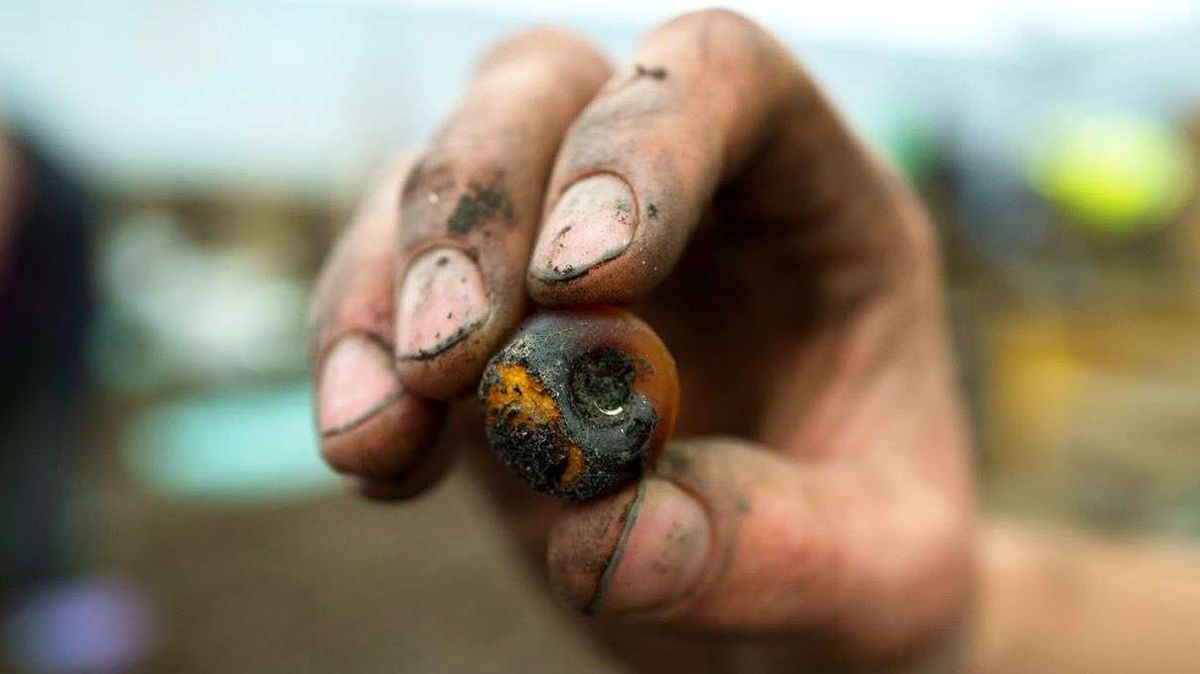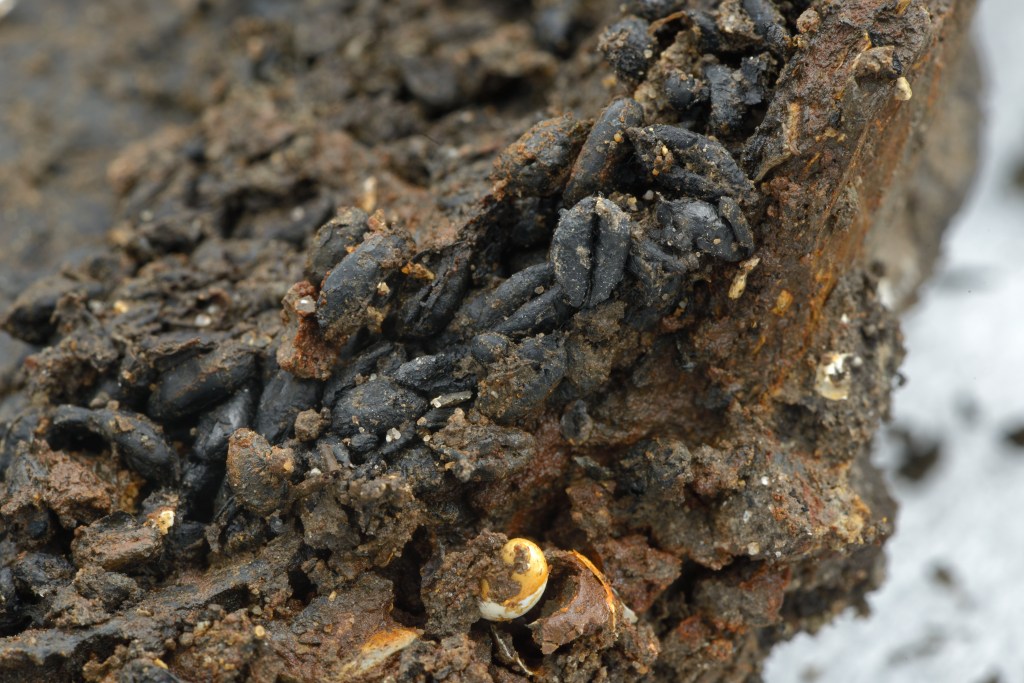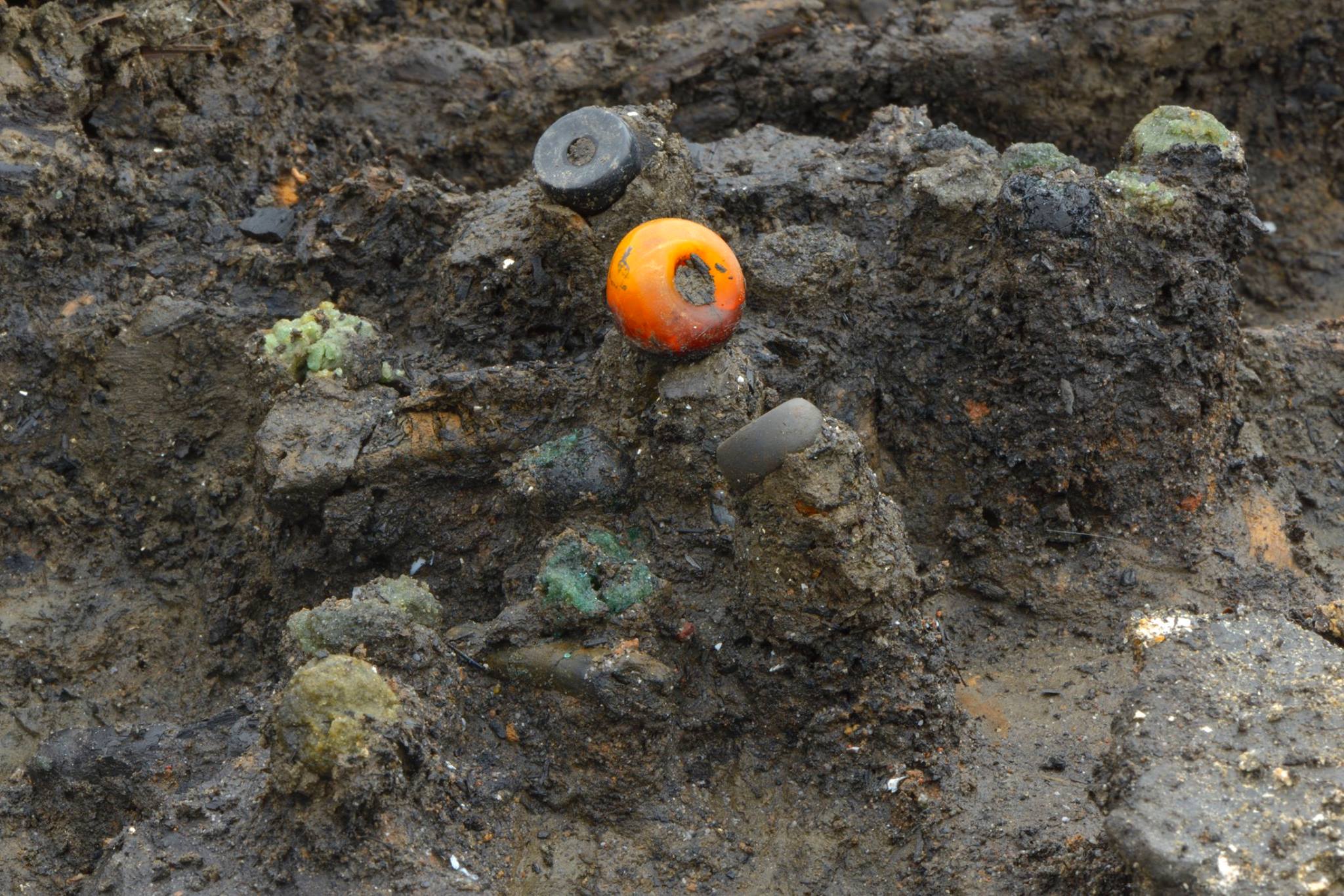Introduction
Nestled in the heart of eastern England, the 60-person settlement known as Must Farm has captivated archaeologists and historians alike. Built around 850 B.C., during the British Bronze Age (2500–800 B.C.), this ancient community has yielded a treasure trove of artifacts that shed light on the fascinating global connections of the era. Chief among these remarkable finds is the largest collection of glass beads from the entire Bronze Age period in Britain.

Discovered by archaeologists, these 56 tiny beads are made from a diverse array of materials, including amber, siltstone, shale, tin, faience, and glass. What makes this discovery so extraordinary is the sheer variety of their origins, stretching from the local landscapes of Dorset and Ireland, to the distant realms of Denmark, Switzerland, Egypt or Mesopotamia, and even Iran. This remarkable assemblage offers a tantalizing glimpse into the intricate trade networks and cultural exchanges that flourished during this pivotal era in human history.
In this blog post, we’ll delve into the significance of the Must Farm beads, exploring what they reveal about the interconnected world of the British Bronze Age. From the skilled craftsmanship behind their creation to the insights they provide into the far-reaching trade routes of the time, these tiny artifacts hold the power to transport us back to a bygone era and uncover the global connections that shaped the lives of our ancestors.
The Significance of the Must Farm Beads
The discovery of the 56 beads at the Must Farm settlement is a remarkable archaeological find for several reasons. Firstly, the sheer quantity of beads is unprecedented for the British Bronze Age, making this the largest collection of its kind ever found in the region. This alone speaks to the importance and wealth of the Must Farm community, which was clearly engaged in extensive trade and exchange networks during this period.
But the true significance of the Must Farm beads lies in the diversity of their materials and origins. These tiny artifacts were crafted from a wide range of materials, including:
- Amber: A fossilized tree resin found in Dorset and along the coasts of the North Sea.
- Siltstone and Shale: Types of sedimentary rock that were likely sourced from local or regional quarries.
- Tin: A rare metal that was crucial for the production of bronze, and was likely obtained from tin mines in Cornwall or Devon.
- Faience: A type of glazed ceramic material that was typically produced in the Mediterranean region or Mesopotamia.
- Glass: A material that was still relatively new and exotic in Bronze Age Britain, and was likely imported from as far away as Egypt or the Near East.
The presence of these diverse materials, each with their own distinct origins, speaks to the extensive trade networks and cultural exchanges that were taking place during the British Bronze Age. The Must Farm beads were not just local products, but rather a reflection of the global interconnectedness of the time.

Tracing the Trade Routes of Bronze Age Britain
The materials used to create the Must Farm beads provide valuable clues about the trade routes and cultural exchanges that flourished during the British Bronze Age. Let’s take a closer look at the origins of these remarkable artifacts:
Amber from Dorset and the North Sea
Amber, a fossilized tree resin, was a highly prized material in the Bronze Age, and was often used in the production of decorative beads and jewelry. The amber beads found at Must Farm were likely sourced from the coastal regions of Dorset, where natural deposits of this material have been documented. However, amber was also traded extensively along the coasts of the North Sea, connecting Britain to communities in Denmark, the Netherlands, and beyond.
Siltstone and Shale from Local and Regional Quarries
The siltstone and shale beads found at Must Farm were likely sourced from local or regional quarries, as these types of sedimentary rocks were widely available throughout eastern England. The presence of these locally-sourced materials suggests that the Must Farm community had access to a robust network of regional trade and exchange, allowing them to obtain raw materials from nearby sources.
Tin from Cornwall and Devon
Tin was a crucial ingredient in the production of bronze, a metal alloy that was essential for the creation of tools, weapons, and other artifacts during the Bronze Age. The tin used to make the Must Farm beads was likely obtained from the tin mines of Cornwall and Devon, which were known to have been active during this period. This highlights the importance of these regional resources in the broader trade networks of Bronze Age Britain.

Faience and Glass from the Mediterranean and Near East
The presence of faience and glass beads at Must Farm is particularly intriguing, as these materials were relatively new and exotic in Bronze Age Britain. Faience, a type of glazed ceramic, was typically produced in the Mediterranean region or Mesopotamia, while glass was likely imported from as far away as Egypt or the Near East.
The fact that these materials made their way to the Must Farm settlement speaks to the extensive trade networks and cultural exchanges that were taking place during this time. Goods, ideas, and technologies were flowing across vast distances, connecting communities in Britain to the broader ancient world.
The Skilled Craftsmanship Behind the Beads
In addition to the insights the Must Farm beads provide about trade and cultural exchange, they also offer a glimpse into the remarkable craftsmanship of the Bronze Age artisans who created them. The production of these tiny, intricate objects required a high degree of skill and specialized knowledge.

Amber Bead-Making
The process of creating amber beads was a delicate and time-consuming task. Artisans would have carefully selected and prepared the raw amber, then used specialized tools to shape and drill the beads. This required a deep understanding of the material’s properties and the ability to work with it precisely and efficiently.
Siltstone and Shale Bead-Making
The siltstone and shale beads found at Must Farm were likely produced using a combination of cutting, grinding, and polishing techniques. Skilled craftspeople would have selected the appropriate raw materials, then used specialized tools to shape the beads and create their distinctive forms and surfaces.
Faience and Glass Bead-Making
The production of faience and glass beads was an even more complex and specialized process. Faience beads were created by coating a ceramic core with a vitreous glaze, while glass beads were produced by melting and shaping silica-based materials. These techniques required a deep understanding of materials, heat, and chemical processes, as well as the ability to work with precision and control.
The fact that these diverse bead types were all present at the Must Farm settlement suggests that the community had access to a range of skilled artisans and craftspeople, who were able to produce a wide variety of decorative and functional objects. This, in turn, speaks to the wealth, status, and cultural sophistication of the Must Farm community during the British Bronze Age.
Conclusion
The remarkable beads discovered at the Must Farm settlement in eastern England offer a tantalizing glimpse into the interconnected world of the British Bronze Age. These tiny artifacts, crafted from a diverse array of materials sourced from around the globe, speak to the extensive trade networks and cultural exchanges that flourished during this pivotal period in human history.
By tracing the origins of the Must Farm beads, we can begin to map out the intricate web of relationships and interactions that linked communities across the ancient world, from the local landscapes of Dorset and Ireland to the distant realms of Denmark, Switzerland, Egypt or Mesopotamia, and even Iran.
These remarkable finds not only provide insights into the wealth, status, and cultural sophistication of the Must Farm community, but also have had a significant impact on the field of archaeology, inspiring new research and collaborations that aim to uncover the full extent of the global connections that shaped the lives of our Bronze Age ancestors.
As we continue to study and explore the Must Farm beads, we are reminded of the remarkable interconnectedness of the ancient world, and the enduring legacy of the human spirit to forge connections and exchange ideas across vast distances and diverse cultures. These tiny artifacts, in all their global diversity, stand as a testament to the power of human ingenuity, curiosity, and the drive to explore and understand the world around us.

